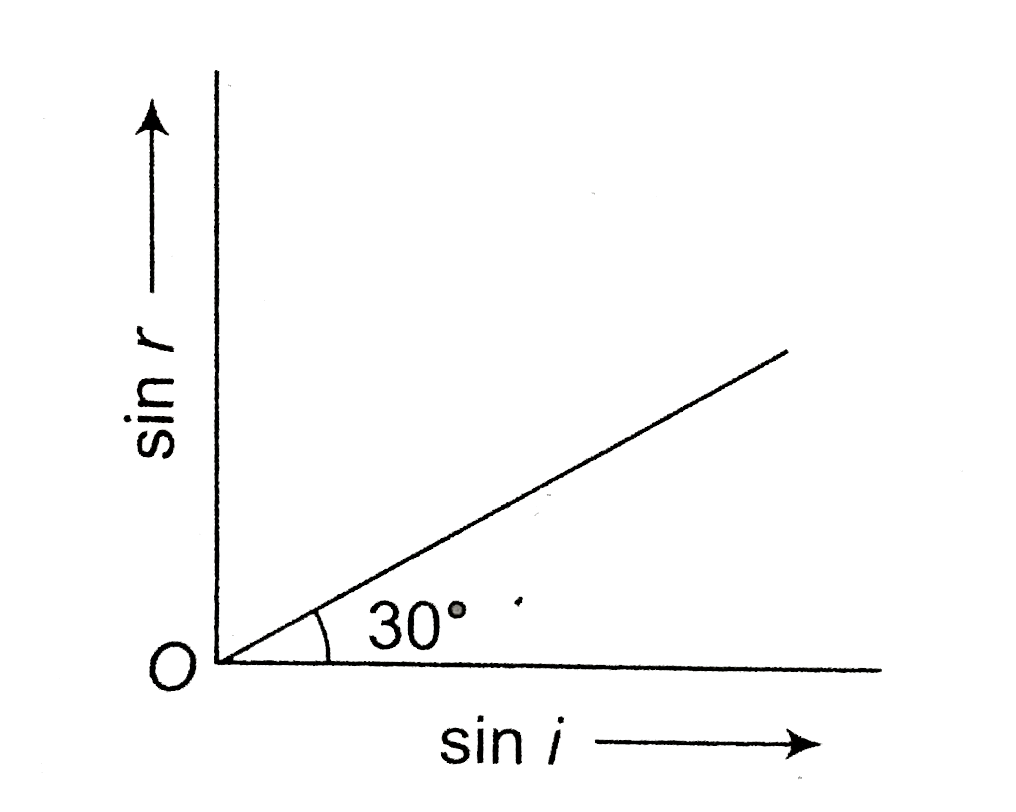The index of refraction can be defined as the velocity of light In a vacuum divided by the velocity In the medium (N=CS) If this is the case, another valid expression for Snell's law Is
SinθiSinθr=CrSr
SinθiSinθr=CiCr
SiSr=NrNi
SinθiSinθr=SiSr
The correct Answer is:D
To derive another valid expression for Snell's law using the index of refraction, we can follow these steps:
1. Understanding the Index of Refraction:
The index of refraction (N) is defined as:
N=CS
where C is the speed of light in a vacuum and S is the speed of light in the medium.
2. Consider Two Media:
Let’s consider two media with indices of refraction N1 and N2. The speed of light in these media can be expressed as:
S1=CN1andS2=CN2
3. Using Snell's Law:
Snell's law states that:
N1sin(θi)=N2sin(θr)
where θi is the angle of incidence and θr is the angle of refraction.
4. Substituting the Speeds:
We can express N1 and N2 in terms of the speeds of light:
N1=CS1andN2=CS2
Substituting these into Snell's law gives:
CS1sin(θi)=CS2sin(θr)
5. Canceling C:
Since C is a common factor on both sides, we can cancel it out:
sin(θi)S1=sin(θr)S2
6. Rearranging the Equation:
Rearranging gives us:
sin(θi)sin(θr)=S1S2
7. Final Expression:
This can be interpreted as:
sin(θi)sin(θr)=N2N1
which is another valid expression for Snell's law.
The index of refraction (N) is defined as:
N=CS
where C is the speed of light in a vacuum and S is the speed of light in the medium.
Let’s consider two media with indices of refraction N1 and N2. The speed of light in these media can be expressed as:
S1=CN1andS2=CN2
Snell's law states that:
N1sin(θi)=N2sin(θr)
where θi is the angle of incidence and θr is the angle of refraction.
We can express N1 and N2 in terms of the speeds of light:
N1=CS1andN2=CS2
Substituting these into Snell's law gives:
CS1sin(θi)=CS2sin(θr)
Since C is a common factor on both sides, we can cancel it out:
sin(θi)S1=sin(θr)S2
Rearranging gives us:
sin(θi)sin(θr)=S1S2
This can be interpreted as:
sin(θi)sin(θr)=N2N1
which is another valid expression for Snell's law.
Similar Questions
If c is velocity of light in vacuum and v is the velocity of light in a medium of refractive index μ, then
View SolutionHow is the refractive index of a material related to:
Velocity of light in vacuum or air and the velocity of light in a given medium?
View SolutionDefine the term refractive index of a medium in terms of velocity of light.
View SolutionIf the wavelength of light in vacuum be λ, the wavelength in a medium of refractive index n will be
View SolutionThe ratio between the velocity of light in a given optical medium to the velocity of light in vacuum is called refractive index.
View SolutionThe ratio between velocity of light in vacuum to velocity of light in air is called refractive index. ____
View SolutionHuygen's principle of secondary wavelets may be used to find the velocity of light in vacuum explain the particle behaviour of light find the new position of wavefront explain Snell's law
View SolutionWhen light is incident on a medium at angle i and refracted into a second medium at an angle r, the graph of sinr versus sini is as shown. From this one can conclude that

(i) the velocity of light in second medium is √3 times the velocity of light in the first medium
(ii) the velocity of light in the first medium is √3 times the velocity of ligth in second medium
(iii) the critical angle of the two media is given by siniC=1√3
(iv) the critical anlge of the two media is given by siniC=1√2
View SolutionThe laws of reflection or refraction are the same for sound as for light. The index of refraction of a medium (for sound) is defind as the ratio of the speed of sound in air 343m/s to the speed of sound in the medium.
What is the index of refraction (for sound) of water (v=1498m/s)?
What is the critical angle θ, for total reflection of sound from water?
View SolutionThe lens governing the behavior of the rays namely rectilinear propagation laws of reflection and refraction can be summarised in one fundamental law known as Fermat's principle. According to this principle a ray of light travels from one point to another such that the time taken is at a stationary value (maximum or minimum).
if c is the velocity of light in a vacuum the velocity in a medium of refractive index μ is cμ hence time taken to travel a distance l is μlc if the light passes through a number of media, the total time taken is (1c)∑μl or 1c∫μdl if refractive index varies continuously. Now ∑μl is the total path, so that fermat's principle states that the path of a ray is such that the optical path in at a stationary value. this principle is obviously in agreement with the fact that the ray are straight lines i a homogenous isotropic medium. it is found that it also agrees with the classical laws of reflection and refraction.
Q. If refractive index of a slab varies as μ=1+x2 where x is measured from one end then optical path length of a slab of thickness 1 m is
View Solution
